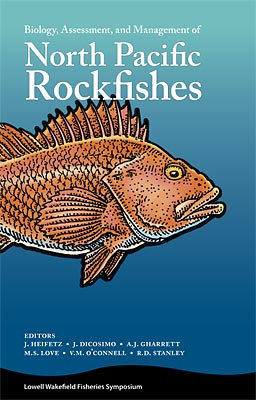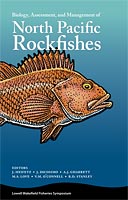
Genetic identification of progeny of reef-resident brown rockfish (Sebastes auriculatus)
L. Hauser, L. Newton, L. LeClair, and R. Buckley
- Price: $2.10 Sale: $0.00
 This is part of Biology, Assessment, and Management of North Pacific Rockfishes
This is part of Biology, Assessment, and Management of North Pacific Rockfishes| Format | Price | |
|---|---|---|
| PDF download [245.7 KB] Bypass cart and download |
Free | Add to Cart |
Description
The extent of larval retention and natal homing in demersal fish is a topic central to the design and the efficacy of marine protected areas (MPAs). Unfortunately, little is known about effective larval dispersal in many marine species. The duration of the pelagic phase in many species suggests extensive dispersal, and population genetic studies indicate large-scale exchange of migrants, though there is also recent evidence for surprisingly limited realized dispersal. Here, we use genetic markers (microsatellites) to identify the offspring of resident adult brown rockfish (Sebastes auriculatus) among incoming settling juveniles on an isolated artificial reef at Point Heyer in Puget Sound, thus directly estimating rates of self-recruitment on the reef. Due to low marker variability, unambiguous identification of these offspring from empirical data was not possible. Nevertheless, comparison between parent-offspring matches in observed and simulated genetic data suggested that self-recruitment was less than 10%. One of the juveniles genetically matching an adult was confirmed as its offspring by larval otolith marking, which confirms that self-recruitment does occur. Our data suggested some, but limited, self-recruitment, that corresponded well to expectations at this scale from mean dispersal distances in brown rockfish.
Item details
- Item number: AK-SG-07-01f
- Year: 2007
- DOI: https://doi.org/10.4027/bamnpr.2007.06



